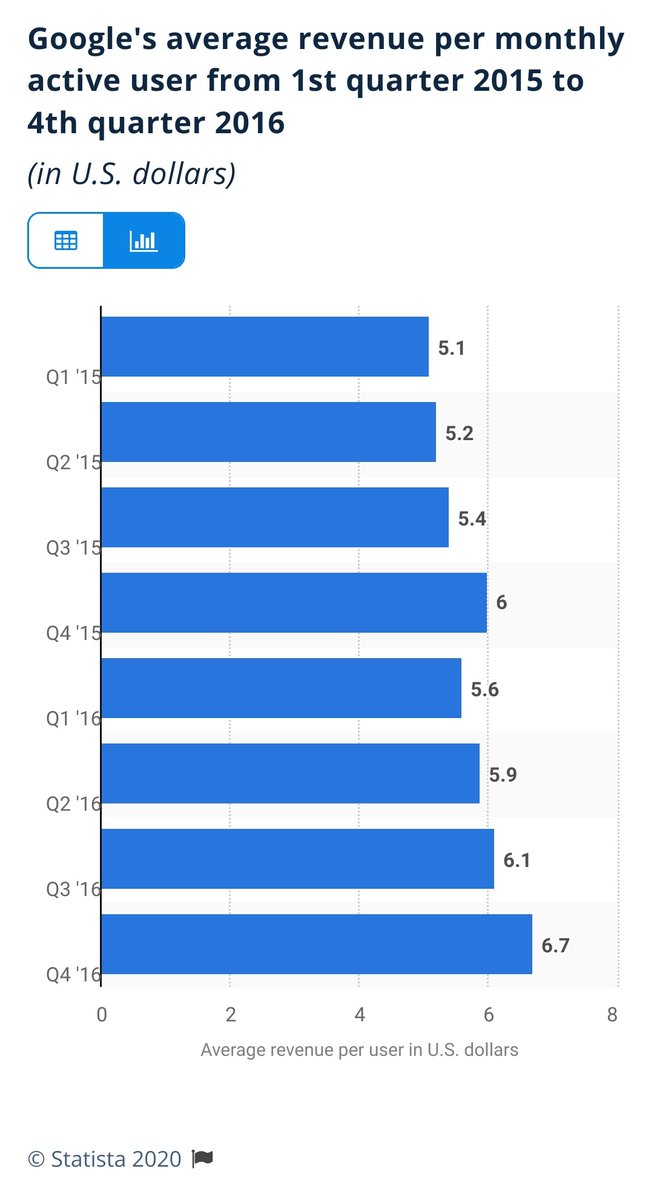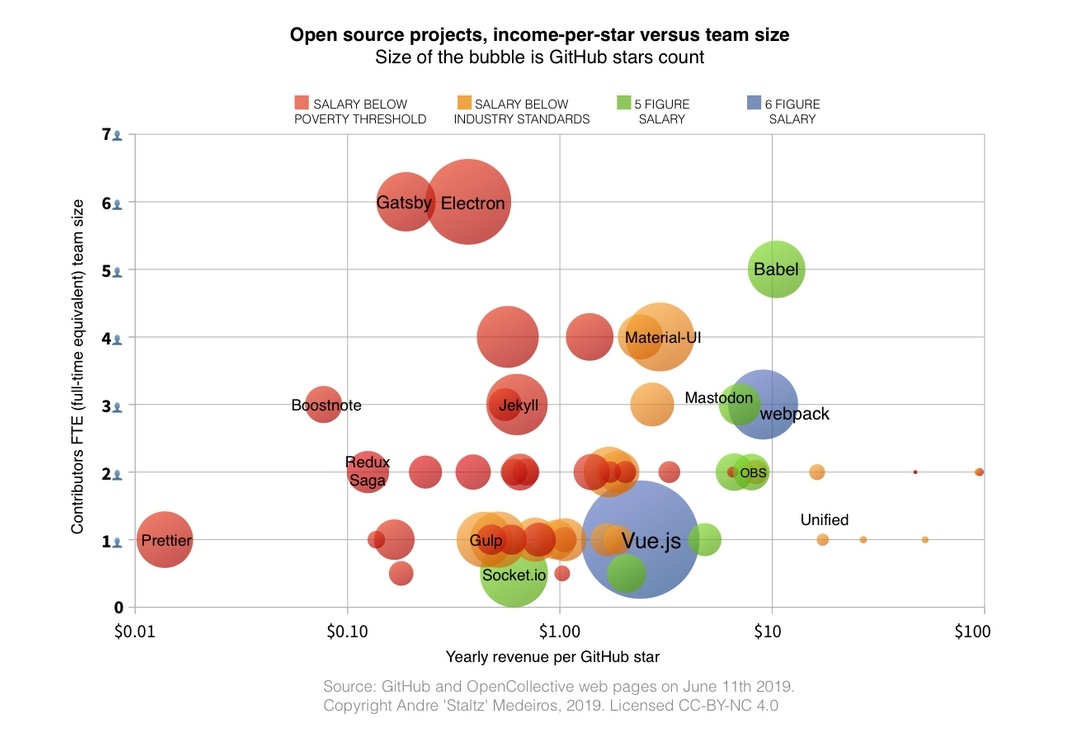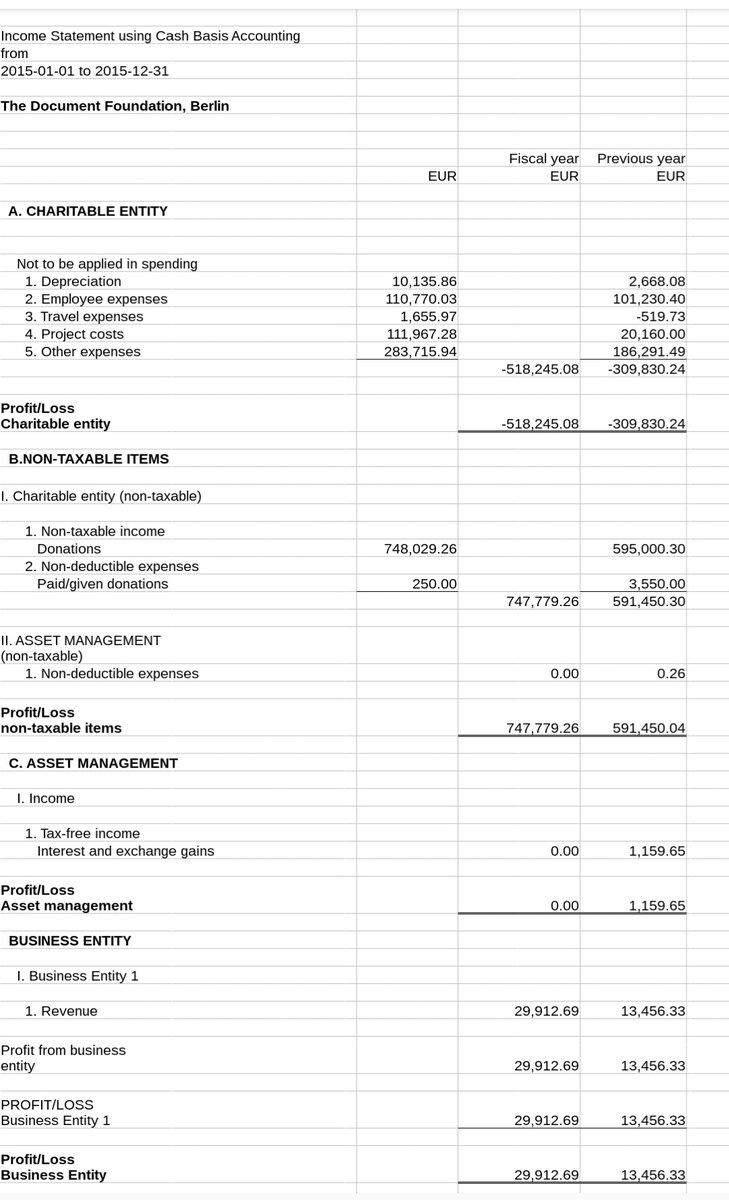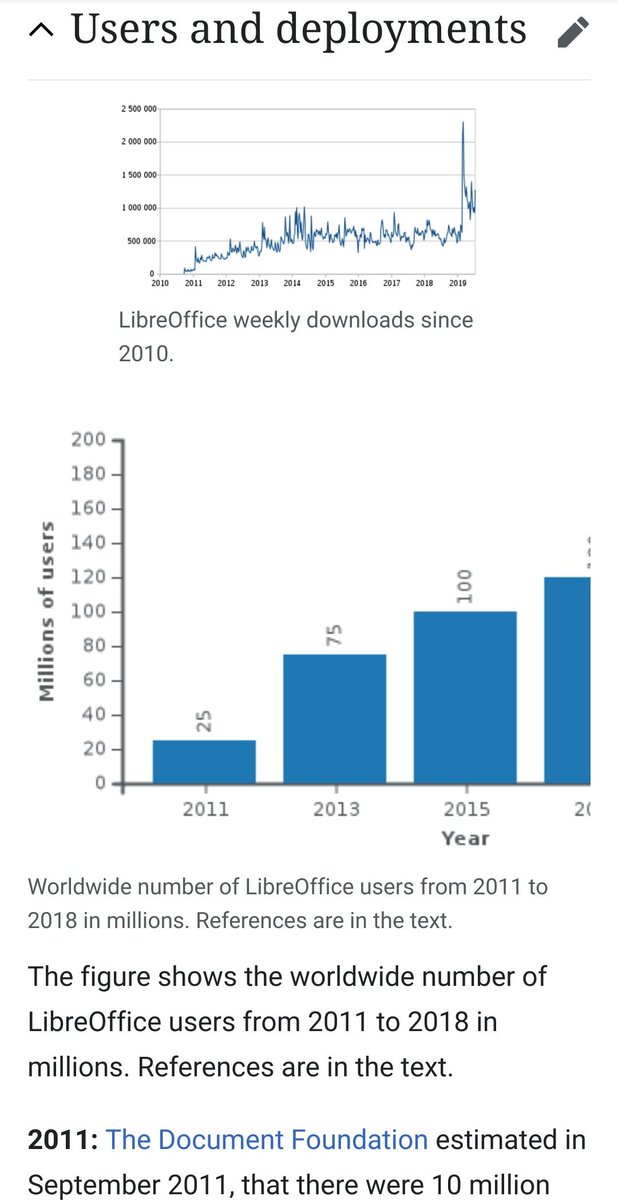The price of software is racing to zero. When I wrote the blog post "Software below the poverty line", I showed open source projects are earning less than industry average. In the future, they will earn even less!
Thread:
Thread:
Let& #39;s take a historical look. When software was sold in a box (e.g. Microsoft Office in the 2000s), each edition came out every 4 years and costed roughly $400, so a price point of:
$100/user-year around the year 2005
$100/user-year around the year 2005
Next came Software as a Service (sustained by ads or yearly subscription). Google and Facebook in 2010s earned approximately $20/user-year each. Google Docs is just one of Google& #39;s products (and an alternative to MS Office), earning a fraction of $20, so:
~$10/user-year in 2015
~$10/user-year in 2015
Open source is what comes next, with self-hosted services and open alternatives to proprietary apps. It& #39;s hard to measure revenue per user for OSS, and it& #39;s what I tried to do with the blog post ( https://staltz.com/software-below-the-poverty-line.html">https://staltz.com/software-... ) where the price point is:
$1/user-year in 2020
$1/user-year in 2020
LibreOffice (continuing the Office suite examples from tweets above) earned $500k in 2015, with 100 million users, thus approximately less than 1 cent per user-year. (Back of envelope calculations from their open data:)
Monolith open source (examples: Django, LibreOffice, frameworks like Vue.js) tend to earn more income than modular open source (e.g. most medium and small node modules), and there is more and more of the modular type being published, recently, several Rust crates are modular.
What does this mean for us developers trying to make a living in open source and how does this trend towards zero affect the future of open source sustainability?
I discuss those in this podcast episode that just came out today: https://podcast.sustainoss.org/55 ">https://podcast.sustainoss.org/55"&...
I discuss those in this podcast episode that just came out today: https://podcast.sustainoss.org/55 ">https://podcast.sustainoss.org/55"&...

 Read on Twitter
Read on Twitter






